As the sun rises across Mexico’s Sierra Gorda nature reserve, a golden light illuminates its nearly 400,000 hectares of mountains, gorges and valleys.
Set amid this vast wilderness is the Bucareli mercury mine.
Just after dawn, a metal door to the mine opens. The morning’s silence is broken by the dull sound of a generator and workers traipsing to their posts.
Among them is Jose Vigil, one of 800 people in the region who mine mercury, a highly toxic substance.
But for Vigil and the other miners, the clock is ticking.
The Minamata Convention on Mercury, a Multilateral Environmental Agreement, is tackling mercury production. Mining the element will become illegal in Mexico and the rest of the world in 2032. This is leaving many miners worried about how they will support their families even as they grapple with the often-dire health risks posed by their profession.
“We’re running out of time,” says Vigil. “We are looking for other alternatives, other means to be able to survive…[but]…it is the only way to make money.”
With unemployment sitting at over 70 per cent, Bucareli and its miners find themselves at a crossroads.

In response, the Mexican government has launched a project to help 19 communities in the Sierra Gorda transition to alternate, mercury-free livelihoods. Led by the United Nations Environment Programme (UNEP) and supported by the Global Environment Facility (GEF), the project is executed by Mexico’s National Institute of Ecology and Climate Change (INECC).
“The message from the governments that ratified the Minamata Convention is clear,” says Sheila Aggarwal-Khan, Director of UNEP’s Industry and Economy Division. “We must protect human health and the environment from the dangers of mercury while supporting miners to find sustainable, safer and economically viable alternatives.” In Mexico, environmental impact assessments and community consultations supported by UNEP and INECC are unlocking government investment in sustainable livelihood alternatives for miners, while providing a basis for mercury-free local development strategies.

Next week marks the beginning of the fifth Minamata Convention on Mercury Conference of the Parties, the latest edition of an annual gathering. The event will cast a spotlight on the often-devastating effects of mercury.
The element is a neurotoxin and even at low levels of exposure, can cause nervous, digestive and immune system damage. It is particularly dangerous for pregnant women, sometimes causing miscarriage, and does not break down in the environment, instead accumulating in food chains.
From its original use in ancient cosmetics and alchemy to later applications in medical devices, electronics and most gold and silver mining, mercury has been used for centuries due to its versatility.
Globally, most large mercury mines have closed. However, driven in part by higher gold prices, the use of the element in small-scale gold mining has increased, spurring the construction of new informal mines.
Most recognizable in its liquid form, mercury starts off in the ground as a dark rock called cinnabar, streaked with red veins.

In Bucareli, cinnabar is extracted from deep within the mine, collected into sacks, and hoisted to the surface via a winch. Once above ground, the cinnabar is ground and shovelled into a furnace sealed with clay. It is heated, roasting until it evaporates, then rises as mercury vapour until it condenses in cooling tubes.
The liquid mercury collects in a container before being cleaned by a miner wearing a gas mask. They use a sponge, ringing it out as if it were a damp cloth.
Despite precautions, the process is very dangerous. Miners are exposed to toxic fumes on a daily basis through a gaping hole in the furnace roof.
“People get poisoned and do not last long,” says Vigil.
What is left of the burnt cinnabar is cast-off into the environment, polluting the region, otherwise viewed as a model of conservation.
Mexico ranks as the second-largest global producer of mercury, falling just behind China, with an annual production of approximately 200 tonnes per year. The Sierra Gorda produces about 101 tonnes alone, making it the dominant region in the Americas.

Seldom do the financial rewards reach the miners. The current selling price of mercury from miner to broker is a meagre 1,500 Mexican pesos per bottle, approximately US$80. Brokers sell the same product in nearby Querétaro at a 10-fold markup, typically to artisanal gold miners, who use it to separate gold from ore.
Many mercury miners yearn to leave the industry. According to a recent survey 79 per cent said they would prefer an alternate occupation if supported.
“I have discussed this with my wife, and she says that it would be good for us to do another type of work,” says Vigil. “Something like agriculture…something in tourism. That is what I would like to do to move forward with my family.”
However, Bucareli is isolated, situated nearly 30 kilometres from the main road, a journey that requires traversing jagged cliff edges and wrenching drops.

That has meant that alternative businesses have been difficult to establish, leaving the town reliant on mining. “[The road] has always ruined our projects,” laments Bucareli mine foreman Jamie Moran.
The new project backed by UNEP and the GEF is aiming to change that. It provides job training to miners once they have decided on a new occupation. It also helps them to acquire capital to start their own business, while supporting legislation to permanently close mercury mines and bar the construction of new mines.
Luis Felipe Abreu García, INECC General Coordinator of Pollution and Environmental Health, hopes that most of the miners in the Sierra Gorda area will start to transition to new jobs within the year.
For Leonardo Herra this switch is already underway. A one-time mining foreman, the project helped him branch out into ecotourism; he now leads sunrise trips to viewpoints around Bucareli.
“To be able to take advantage of these places, these views that we have here, represents the opportunity to leave mining, to stop working inside a hole and go out to the surface and dedicate ourselves to another less risky activity, together with our families,” he says.

Tourism has grown steadily in the Sierra Gorda over the past decade, with the region now welcoming 218,000 visitors annually.
“If we manage to bring 100, 200,... 1,000 tourists a week or a month, all of them require services,” Herra says, who sees opportunities in everything from building ziplines to opening taco shops. “That is where my mining colleagues can come in.”
Experts say job opportunities also exist in harvesting oregano and pine nuts and in forest management. In 2019, a fire in the Sierra Gorda resulted in the loss of more than 3,250 hectares of woodland. Preventing future blazes will require a significant local workforce to clean up fire-prone leaf litter.
“For us, the GEF funding represents the opportunity to kickstart all these activities so that all the miners can now work 100 per cent on something else, allowing us to leave primary mercury mining behind,” says Herra.
To fight the pervasive impact of pollution on society, UNEP launched #BeatPollution, a strategy for rapid, large-scale and coordinated action against air, land and water pollution. The strategy highlights the impact of pollution on climate change, nature and biodiversity loss, and human health. Through science-based messaging, the campaign showcases how transitioning to a pollution-free planet is vital for future generations.
The “Reducing global environmental risks through the monitoring and development of alternative livelihood for the primary mercury mining sector in Mexico” project is part of UNEP’s efforts to reduce and where possible eliminate mercury usage across artisanal and small-scale gold mining, mercury-added products and electronics. For more information, please contact Kevin.Helps@un.org. Learn more about our GEF-supported Chemicals and Waste work here.






